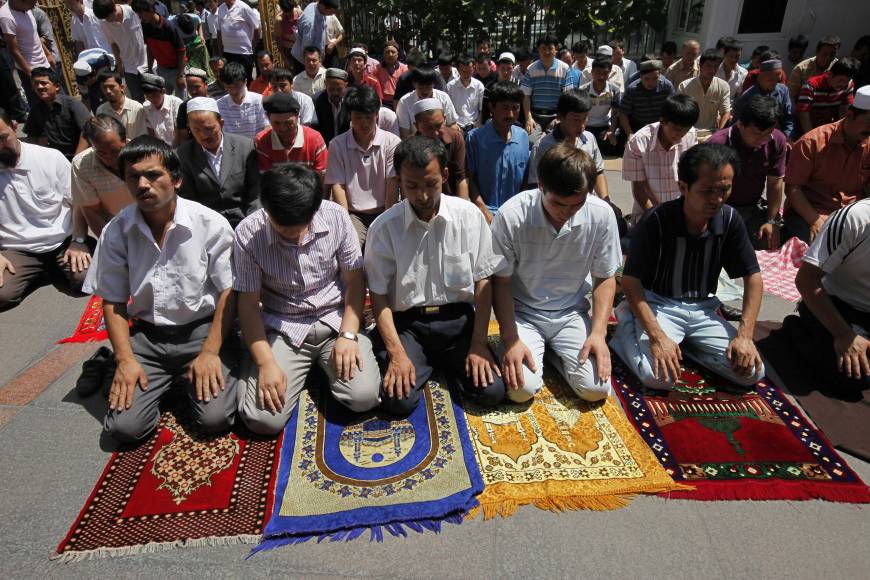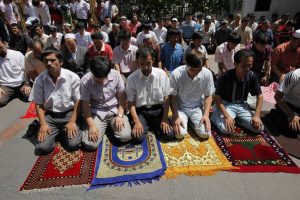A heavy hand in Xinjiang

The Japan Times, 7 March 2017

Japan Times — China has long had an uneasy relationship with the Uighurs, Muslims who constitute a majority of the population in the western province of Xinjiang. The Chinese Communist Party has worried about the threat of terrorism emanating from the region and has adopted increasingly repressive policies to counter that danger. The result, predictably enough, has been growing unrest. Beijing is now stepping up activities in the region and beyond its borders to check this threat; an indiscriminate heavy hand will do more harm than good.
China’s Xinjiang province is 45 percent Uighur, a Turkik-speaking Muslim group. While they are one of the 55 officially recognized ethnic minorities in China, Uighurs have complained that they have been discriminated against and their native culture denied as an influx of Han Chinese — who now constitute 40 percent of the population — have been brought into the region as part of a stabilization and pacification program. As in Tibet, the authorities claim that they are modernizing a backward part of their country and combating local groups that are terrorists or have terrorist inclinations.
Reportedly, hundreds of people have been killed in Xinjiang over the past few years. Precise figures are hard to come by as independent confirmation of incidents, their cause and size is hard to come by. In recent months, however, the violence is said to have escalated, In February, knife-wielding attackers killed five people and injured five others before they were killed by police. China blamed Uighur militants aided by foreign terrorist groups; other reports say the cause of the incident was not terrorism but a personal grievance: punishment of a Uighur family that held a Muslim prayer session in their home. Beijing used the attack to launch an “all out offensive,” bringing in thousands of armed soldiers, holding mass “anti-terror” rallies and deploying dozens of armored vehicles. The head of the Xinjiang Communist Party called on those forces to “bury the corpses of terrorists in the vast sea of a people’s war,” while the local newspaper warned security forces must prepare “for a battle between good and evil, lightness and dark.”
These are just the latest in a series of increasingly oppressive measures. Authorities confiscated the passports of all Xinjiang residents late in 2016 and last month ordered the installation of GPS tracking devices in all vehicles in western parts of the province.
There are other explanations for the harsh response, beyond the February knife attack. Most worrying for the authorities is the release of a video by Islamic State militants who claim to be Uighur in which they pledge to return home and “shed blood like rivers.” There are reports that some Uighurs have gone to Syria to join the IS forces. The video would seem to back the Chinese government’s claim that unrest in the region is the product of outside agitators. The problem for that argument is that the video was released only after the military show of force; in other words, it confuses cause and effect.
Beijing has been quick to blame the East Turkistan Islamic Movement (ETIM), an al-Qaida affiliated group and has called for international cooperation to fight the group. While there are few doubts about the nature of the ETIM, there are fears that the Chinese authorities are using that brush to tar all dissent within Xinjiang. Uighur human rights activists have been arrested and imprisoned, a policy that only further radicalizes already restive populations.
A second reason for the crackdown is political. China holds its 19th Party Congress later this year and no regional leader wants to go into such a setting without being able to claim that law and order is in place.
Increasingly, Beijing is working with neighbors to stop terrorists before they enter China. The most prominent vehicle for cooperation has been the Shanghai Cooperation Organization, which China and Russia use to engage Central and South Asian governments — Kazakhstan, Kyrgyzstan, Tajikistan, Uzbekistan, India and Pakistan — in their fight against separatism, extremism and terrorism. These efforts have included law enforcement programs, joint training exercises and economic development to block, eliminate or prevent terrorist activities.
Most recently, China is increasingly alert to the threat of instability in Afghanistan, particularly in the wake of the drawdown of U.S. and allied forces. There is concern that the country could become a platform for the export of Islamic extremism. A growing number of military officials, including the chief of staff of the People’s Liberation Army, have visited Kabul and there is also talk of including Afghanistan in China’s One Belt, One Road initiative.
Chinese officials deny that they have introduced military forces into the country, but acknowledge that there is law enforcement cooperation in border areas to fight against terrorism. China has agreements with other neighboring states to conduct joint law enforcement patrols, but the presence in Afghanistan is new.
China is right to worry about the dangers of Islamic extremism in its western provinces. But it must also recognize that this threat is not organic and has grown, to some degree, as a result of Beijing’s own policies. China is quick to argue that the best way to fight terrorism elsewhere in the world is to address root causes; it is not exempt from that same diagnosis.

